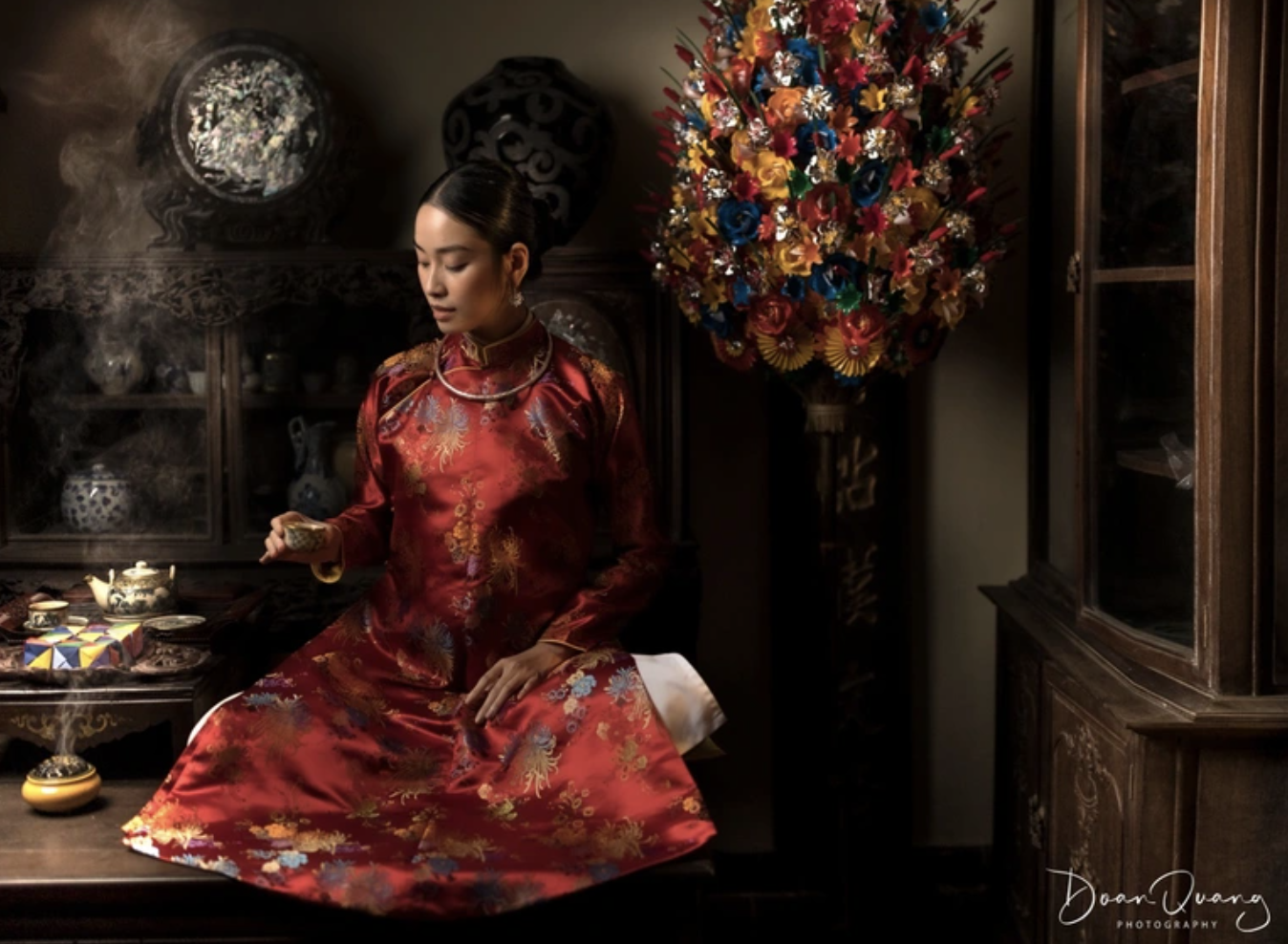When we talk about Vietnam, a few common things immediately come to mind: Hà Nội, Hồ Gươm, phở, cà phê, hoa sen, and the áo dài. For decades, the ao dai has been considered the traditional clothing of Vietnam. However, Vietnamese traditional clothing (“Việt phục" in the local language) has a long history and ao dai isn’t the only one that deserves to be recognized, celebrated, and promoted. Each historical period in Vietnam rendered a distinct costume that bears a story worth telling.
Over the last few years, young Vietnamese are increasingly becoming more interested in other Viet phuc. While there aren’t too many public spaces where they can discover and learn about different traditional clothing, major cities like Hanoi and Ho Chi Minh City have started hosting festivals that promote them.
We listed five of Vietnamese traditional clothing — other than ao dai — that are awe-inspiring, elegant and symbolic.
Áo tứ thân (Four-part dress)
This neck-to-knee costume was used daily by Northern women at the beginning of the 20th century. In a basic áo tứ thân, a woman wears a yếm inside, then a flowing outer tunic and a silk sash tied at the waist. The original áo tứ thân was dark in color as women in the past usually worked on the field, so with colors like brown, dirt cannot be seen.

Áo ngũ thân (Five-part dress)
Two centuries before áo tứ thân, there was áo ngũ thân. It was created in 1744, after a clothing revolution by Nguyen Phuc Khoat. The tunic is created with 5 pieces of cloth, hence the name. Unlike áo tứ thân with no buttons, there are 5 buttons made from metal, wood, or emerald. Ngũ thân's collars can be scooped or straight and go around the person's neck. Áo ngũ thân can be worn by both genders.

Áo tấc
With some small variations in its details, áo ngũ thân has multiple versions. Áo tấc is actually áo ngũ thân but with bigger sleeves. Thus, it can also be called áo ngũ thân tay thụng. “Tấc" in Vietnamese is a unit of measurement, meaning 10cm, which is also the length of its sleeves. In Nguyen Dynasty, áo tấc was considered a formal dress.

Áo giao lĩnh
Giao lĩnh is a traditional cross-collared robe, most popular in Le Dynasty. Actually, giao lĩnh in Vietnam bears some similarities with giao lĩnh from China and Korea in the past. There are two types of giao lĩnh: short flaps and long flaps. When wearing giao lĩnh, you must wear the flap in the correct order. If done wrong, it will become the clothes for the dead.

Áo Nhật bình
The last one and might be the most colorful one is áo Nhật bình. Because the patterns around the collar make a rectangle, it is called “áo Nhật bình". On the tunic, you can see many images of flowers, and phoenixes. Especially, on the sleeves, you can find 5 strands of colors: emerald, yellow, blue, white, and red.

